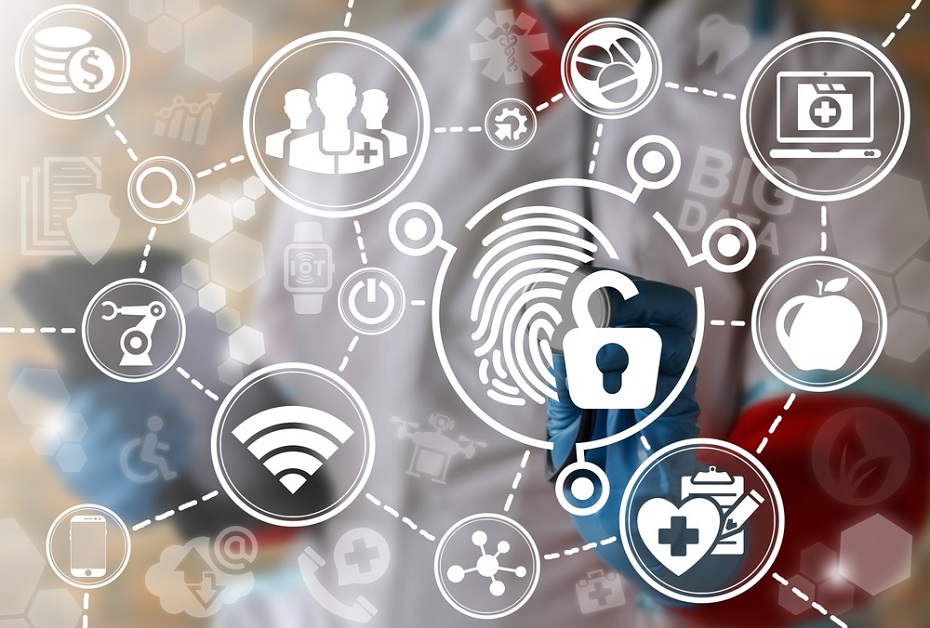Identity Management
Match, manage, and protect patient identities.

There has been a lot of uncertainty with regards to what the future holds for healthcare in the U.S., but the reality is that the move away from transaction-based services where providers are paid by transaction or by interaction with their patients, into a world where some of those services will be paid as bundles, is a reality. At Experian Health, our perspective is that there isn’t going to be one single form of payment. There isn’t going to be only fee for transaction or only fee for value type payments. There is going to be a variety. And our solutions can help providers handle that. When we talk to our largest providers, they want to make sure that they are prepared for the future of healthcare, and that their payment and revenue cycle is robust enough that they can handle whether it is a fee for transaction interaction with the provider or with the patient as well as fee for value. In order to do that, they have to optimize their operations. There is a lot of belt tightening happening in the industry and people are trying to see and understand how best to organize, how best to analyze and facilitate that payment cycle. We believe that data and analytics are two of the key ways to do that. Our software tools as well as the data that we embed into that software helps optimize the revenue cycle. Listen to the complete podcast

On April 27, millions of workplaces, employees, parents and children will celebrate the 24th year anniversary of the Take Our Daughters And Sons To Work® Day program, which encourages girls and boys across the country to dream without gender limitations and to think imaginatively about their family, work and community lives. This national, public education program connects what children learn at school with the actual working world. Experian Health's offices will be participating in this program as part of its Women in Leadership initiative. Learn more about it and how your organization can participate.

In case you missed them, below are links to recently created videos of our clients and staff, as well as links to recorded webinars. New Videos Our healthcare provider clients share their experiences and best practices using Experian Health’s solutions. Watch Now Chris Lah from Cincinnati Children’s Hospital shares his insight around healthcare reimbursement challenges. Watch Now Rachel Papka from Steinberg Diagnostic Medical Imaging Centers outlines her orders management challenges and how her organization has overcome them. Watch Now Karly Rowe from Experian Health highlights the importance of matching, managing and protecting patient identities to safeguard medical information and reduce risk. Watch Now Tony Murdoch from Experian Data Quality explains how Experian's Data Quality Solutions can add value to our clients. Watch Now On Demand Webinars Patient Identification – The Challenges Healthcare Leaders and the Industry are Facing Today (HealthLeaders-hosted event). View Now (registration required) The Importance of Managing and Protecting Patient Identities (NAHAM-hosted event). View Now (registration required)

Challenge: a disconnected healthcare ecosystem Exchanging information across the healthcare ecosystem and achieving interoperability is a goal and challenge all healthcare organizations share. While regulations such as the Affordable Care Act introduced incentives and requirements to drive adoption of electronic medical records, they also highlighted a critical gap in healthcare – a universal patient identifier. Impact: Felt downstream across your enterprise The lack of a universal patient identifier, compounded by data integration challenges and the increasing fluidity of patient data, has created significant issues downstream – billing errors, redundant treatments and testing, HIPAA breaches, incorrect administration of treatments and prescriptions, and more. These issues contribute to the pool of preventable medical errors, which is currently the number three leading cause of death in the United States. Solution: Universal Identity Manager Experian Health’s Universal Identity Manager (UIM) accurately identifies patients and matches records within and across disparate healthcare entities, creating a universal patient identifier to facilitate information exchange. Drawing on more than 40 years of experience managing universal identifiers across various industries and leveraging Experian’s consumer demographic information, the UIM achieves higher match rates than traditional industry solutions. Integration flexibility The UIM is integrated within eCare NEXT®, but also supports various API options. It can also be leveraged in conjunction with biometric and traditional Enterprise Master Patient Index solutions. Batch: Receives, processes, and loads patient demographic information via patient data file. Starting with an initial historical patient data file in batch is recommended. The UIM algorithm is applied to accurately identify duplicate records and assign a Universal Patient Identifier (UPI) that can be used to facilitate information exchange across different healthcare entities. The UIM Batch is currently being offered at no charge to the entire healthcare industry. Duplicate Merge Tool: Provides a workflow tool to address duplicate patient records identified through the UIM batch. The Duplicate Merge Tool encompasses robust access and issue assignment management, configurable merge strategies, customizable search and filter capabilities, comprehensive audit trails, and postback or file output options. Search & Duplicate Medical Record Number (MRN) Alert: Leverages in process scripting to perform a real-time search the UIM as patient demographic information is being entered into an HIS during registration. The optimized patient record for each potential patient match is returned. If the search is circumvented, a Duplicate MRN alert will be created within eCare NEXT and prompt manual user review. Real-time search can also be facilitated through a direct API integration. Experian Single Best Record: Leverages an algorithm to look across all linked patient accounts that exist within a client’s enterprise database and aliases and addresses from Experian’s demographic information and returns back a patient’s single best record by demographic field. Data Analysis: Offers standard, premium, and custom reporting options with detailed data analysis across your patient data file. Learn more about Universal Identity Manager here, or contact your account representative for more information.

Frank Abagnale will present “Stealing Your Life” at HIMSS17 on Monday, Feb. 20, 2017 from 3pm – 4pm. Session #58. Location: Room 320 at the Orange County Convention Center Frank Abagnale is one of the world’s most respected authorities on forgery, fraud, embezzlement, and secure documents. For over 40 years he has worked with, advised, and consulted with hundreds of financial institutions, corporations and government agencies around the world. Mr. Abagnale’s rare blend of knowledge and expertise began more than 50 years ago when he was known as one of the world’s most famous con men. Mr. Abagnale will bring his audience up-to-date with all aspects of identity theft, data breaches, medical identity theft and the means used to obtain peoples identities. He will discuss the importance of identity management healthcare organizations. After the presentation, Mr. Abagnale will be in the Experian Health booth #3503 to meet and greet HIMSS attendees. We invite you come by our booth to meet Mr. Abagnale! Click here for more information on the presentation.

Your organization would make a great participant in our Universal Patient Network. We’ve developed a unique solution leveraging Experian’s demographic data to establish a universal patient identifier, which has higher match performance than standard industry tools. We would like to offer YOU an opportunity to leverage our Universal Identity Manager (UIM) Batch product at NO CHARGE.* What you give: Patient demographic data in a secure file/message What you get: File with Universal Patient Identifier (UPI) and identified duplicates (at your specific frequency) How you benefit: Information exchange, care coordination, patient safety, operational efficiency and financial savings Your organization can address duplicate issues and be at the forefront of promoting a universal patient identifier. Contact Experian Health today to learn more! Visit www.experian.com/umpi, email experianhealth@experian.com or call 1 888 661 5657. *Offer is limited to Experian Health’s UIM Batch Process product and shall remain open for such time as Experian Health may decide.

Experian Health and NCPDP (National Council for Prescription Drug Programs) have joined forces to introduce a vendor-neutral solution that powers a national patient identifier. Experian Health and NCPDP have announced a strategic alliance to provide a vendor neutral solution to address the complexities of managing patient identification. With a shared vision to create solutions and leverage data for the common good, this alliance brings an innovative matching solution that provides the framework for establishing a unique patient identifier to address patient safety, financial and operational challenges across the U.S. healthcare ecosystem. Read the press release here.

Below is a collection of some of most compelling article we've read in recent months. We hope you find these interesting, too! One Goal; One Contract: How a Nationwide Health Data Sharing Framework is Revolutionizing Interoperability https://www.himss.org/news/one-goal-one-contract-how-nationwide-health-data-sharing-framework-revolutionizing-interoperability 7 things to know about Aetna's ACA exchange exit https://www.beckershospitalreview.com/payer-issues/7-things-to-know-about-aetna-s-aca-exchange-exit.html 5 steps to cybersecurity for Internet of Things medical devices https://www.healthcareitnews.com/news/5-steps-cybersecurity-internet-things-medical-devices CMS: ICD-10 specificity kicks in Oct. 1, 2016 https://www.healthcareitnews.com/news/cms-icd-10-specificity-kicks-oct-1-2016 3 leadership skills crucial for a culture change http://www.beckershospitalreview.com/hospital-management-administration/3-leadership-skills-crucial-for-a-culture-change.html

Scott Lee oversees the Experian Health Reference Program. Scott graduated with a BA in Business Management from The University of Texas at San Antonio, and has been with the organization for 12 years, beginning with MPV, which was acquired by Experian in 2011. Scott lives in San Antonio with his wife and two children and says his second home is the San Antonio Zoo based on how much time he and his family spend there. Scott is a catalyst for fostering the connection between Experian Health’s current and potential clients to allow the former to share their positive experience and ROI using our solutions. Our clients also benefit from being a reference by learning about the workflow and best practices of similar organizations. Because of the importance of protecting our clients’ privacy, Scott schedules calls on behalf of our clients and ensures that the experience is mutually beneficial and minimally disruptive for all parties involved. “We’re very appreciative of our reference clients, and it’s a privilege for our potential clients to hear their experiences firsthand.” he said. Share your story by being an Experian Health Reference Client! Contact your Sales Director/Account Manager or contact Scott Lee at scott.lee@experian.com or (210) 582-6320.
